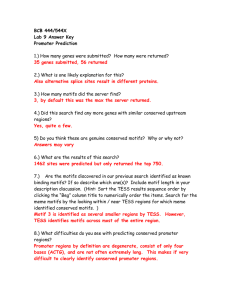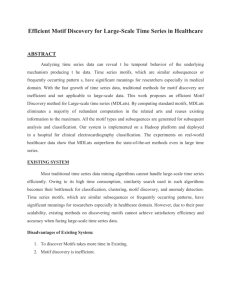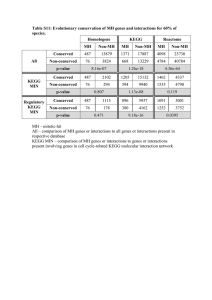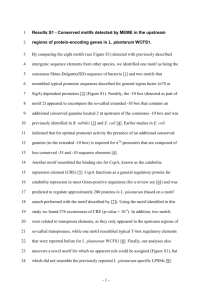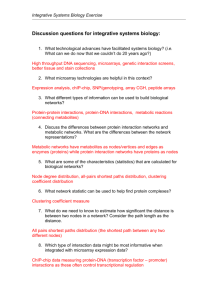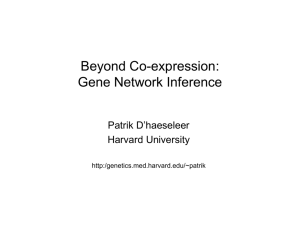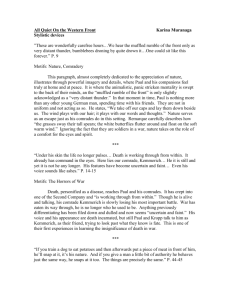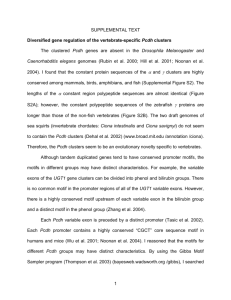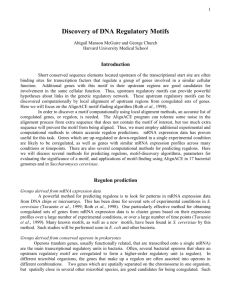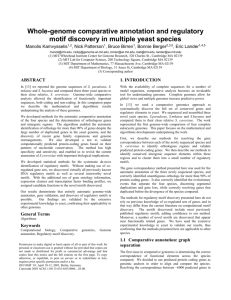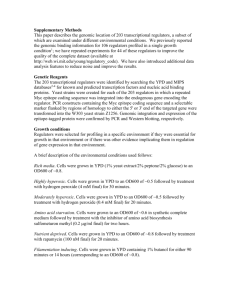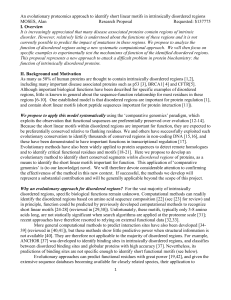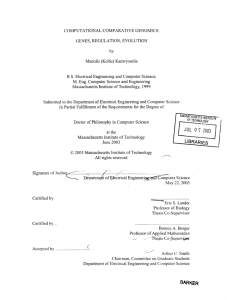Abstract - Home pages of ESAT
advertisement
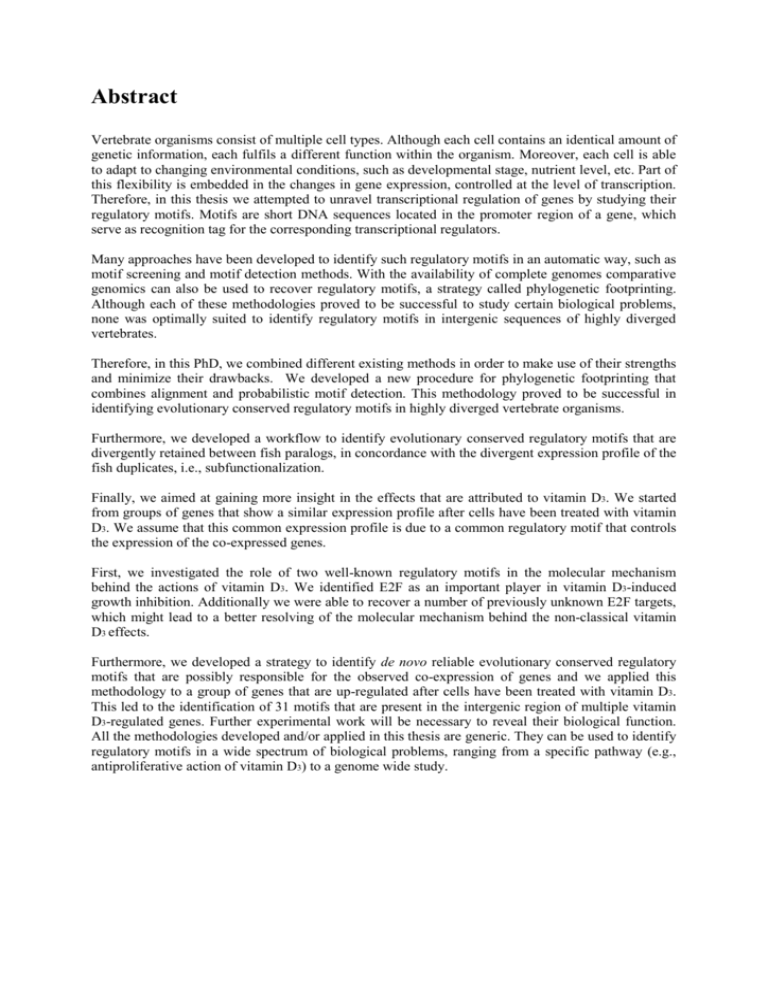
Abstract Vertebrate organisms consist of multiple cell types. Although each cell contains an identical amount of genetic information, each fulfils a different function within the organism. Moreover, each cell is able to adapt to changing environmental conditions, such as developmental stage, nutrient level, etc. Part of this flexibility is embedded in the changes in gene expression, controlled at the level of transcription. Therefore, in this thesis we attempted to unravel transcriptional regulation of genes by studying their regulatory motifs. Motifs are short DNA sequences located in the promoter region of a gene, which serve as recognition tag for the corresponding transcriptional regulators. Many approaches have been developed to identify such regulatory motifs in an automatic way, such as motif screening and motif detection methods. With the availability of complete genomes comparative genomics can also be used to recover regulatory motifs, a strategy called phylogenetic footprinting. Although each of these methodologies proved to be successful to study certain biological problems, none was optimally suited to identify regulatory motifs in intergenic sequences of highly diverged vertebrates. Therefore, in this PhD, we combined different existing methods in order to make use of their strengths and minimize their drawbacks. We developed a new procedure for phylogenetic footprinting that combines alignment and probabilistic motif detection. This methodology proved to be successful in identifying evolutionary conserved regulatory motifs in highly diverged vertebrate organisms. Furthermore, we developed a workflow to identify evolutionary conserved regulatory motifs that are divergently retained between fish paralogs, in concordance with the divergent expression profile of the fish duplicates, i.e., subfunctionalization. Finally, we aimed at gaining more insight in the effects that are attributed to vitamin D3. We started from groups of genes that show a similar expression profile after cells have been treated with vitamin D3. We assume that this common expression profile is due to a common regulatory motif that controls the expression of the co-expressed genes. First, we investigated the role of two well-known regulatory motifs in the molecular mechanism behind the actions of vitamin D3. We identified E2F as an important player in vitamin D3-induced growth inhibition. Additionally we were able to recover a number of previously unknown E2F targets, which might lead to a better resolving of the molecular mechanism behind the non-classical vitamin D3 effects. Furthermore, we developed a strategy to identify de novo reliable evolutionary conserved regulatory motifs that are possibly responsible for the observed co-expression of genes and we applied this methodology to a group of genes that are up-regulated after cells have been treated with vitamin D3. This led to the identification of 31 motifs that are present in the intergenic region of multiple vitamin D3-regulated genes. Further experimental work will be necessary to reveal their biological function. All the methodologies developed and/or applied in this thesis are generic. They can be used to identify regulatory motifs in a wide spectrum of biological problems, ranging from a specific pathway (e.g., antiproliferative action of vitamin D3) to a genome wide study.
